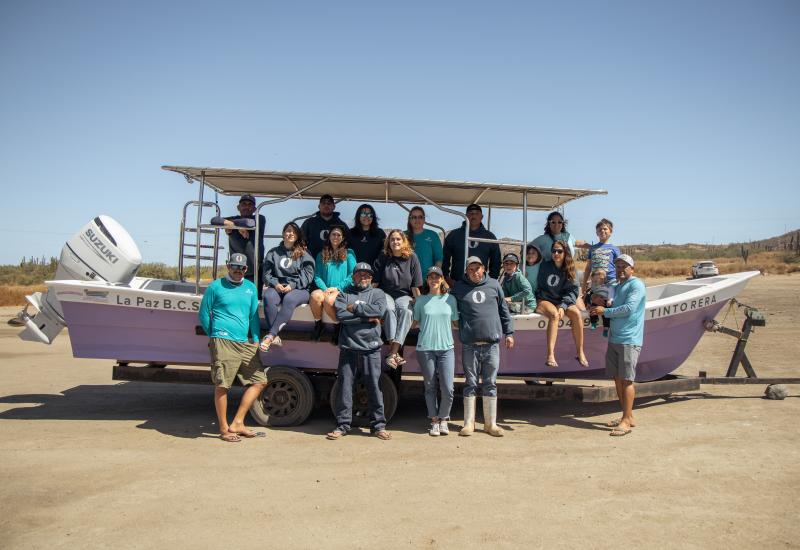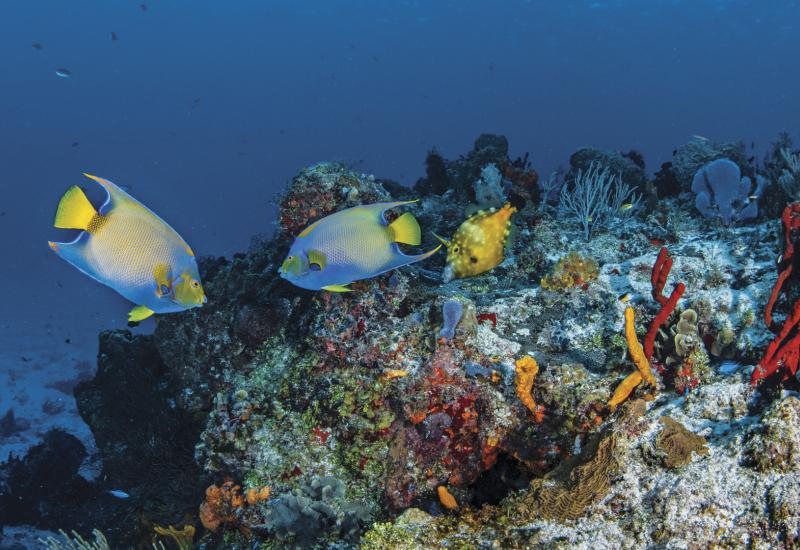Adventure Through Mexico's Socorro Islands by Liveaboard
Have you ever had a moment that not only changed your life, but also transformed your very soul? I thought I had, until my adventure in the waters of the Socorro Islands.
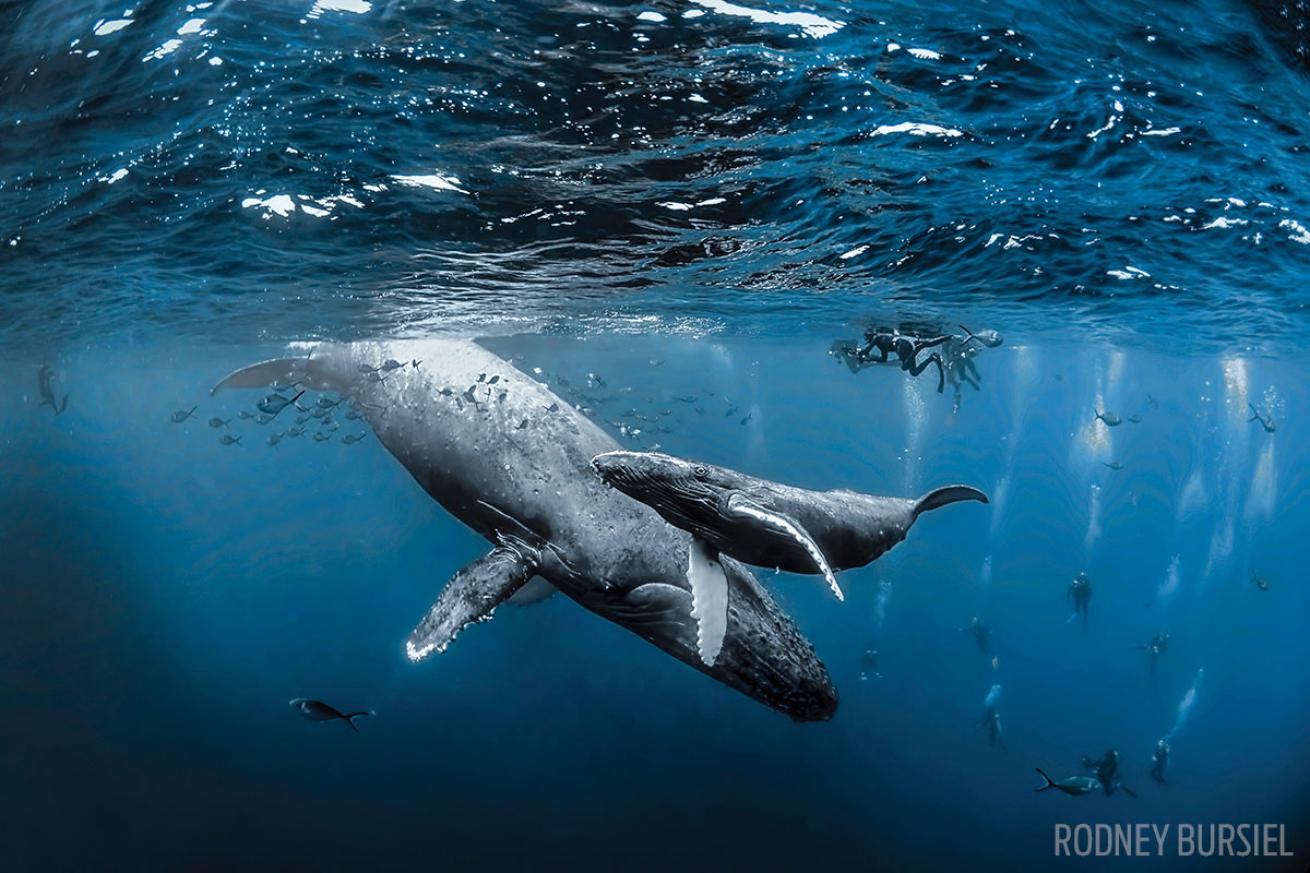
Rodney BursielDivers thrill to observe the mother love between a humpback and her calf off Roca Partida.
I had been looking for a new photography outlet, so I decided to get back into underwater photography after a more than 25-year hiatus. I’ve always wanted to photograph the magnificent creatures of the Pacific. Last year I went cage diving with Great White Adventures on Solmar V to shoot great white sharks; as soon as I returned, I booked a trip on Solmar to the Socorro Islands.
The Socorros are a chain of four small islands in the eastern Pacific about 250 miles south of Cabo San Lucas, Mexico. The area is home to giant manta rays, bottlenose dolphins and several species of sharks, including hammerheads and whale sharks. It’s also where humpback whales go to breed and calve. Different seasons bring different animals — my goal was to dive with humpbacks, even though close encounters aren’t guaranteed like they can be with other animals. When I booked the trip, I had a strange gut feeling we would find whales. As we reached our destination on the second day at sea, there they were.
DEATH IN THE AFTERNOON
When we arrived at Roca Partida, we immediately saw whales: mama, baby and their escort, circling the small island. Erick, one of our divemasters, recognized her as a whale he had seen here before — he was as excited for his reunion with her as I was to see her for the first time. We couldn’t get in the water quick enough. It’s amazing — indescribable, really — to be in the water with a living creature this big and gentle. Watching mama with her baby was one of the most calming experiences I have had. We spent the entire day with them. Taking photographs became secondary; it was a privilege just to share the ocean with them. As soon as we sucked our tanks dry, we grabbed our snorkels and went back in.
The calf was about three weeks old and still learning to control his buoyancy. He would come up for air every three minutes or so, swim around the divers to say hello, then dive back down and get under his mama, who hovered over him to help him stay down.
After the first day, everyone was content to hang with the whales for a few more days instead of moving on in search of other wildlife, but on the second day, we had unexpected guests.
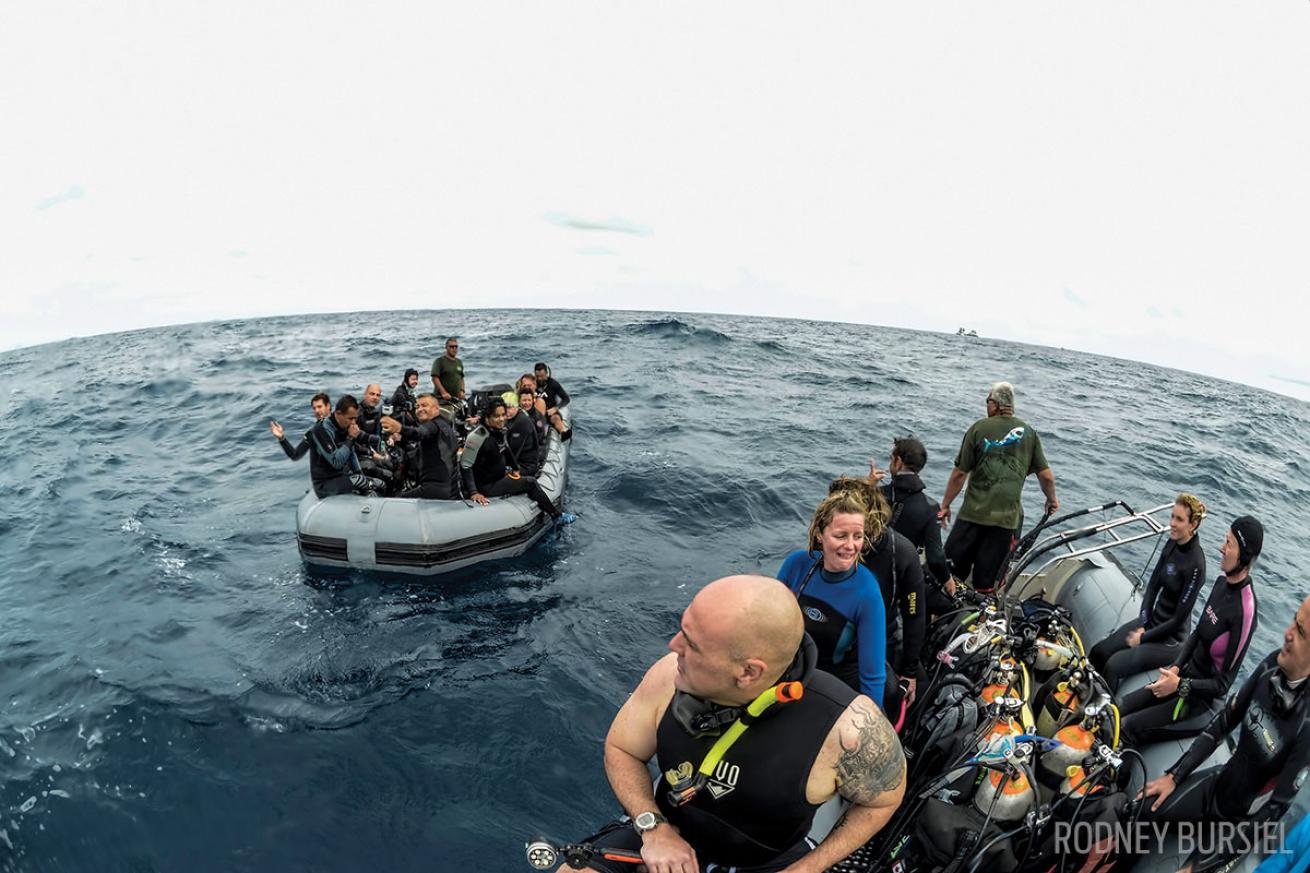
Rodney BursielDiving aboard Solmar V is from pangas.
One panga had just returned to the boat and was unloading gear; a second panga was still with the whales. Those divers were about to get in to snorkel when tragedy struck. We saw whales thrashing, and then we saw the dorsal fins of orcas. My stomach sank.
We jumped in our panga and headed toward the orcas, hoping that mama and her escort could protect the baby, but our worst fears were realized. Two orcas had separated the calf from his mother and were taking him out to sea. I could smell blood and whale oil in the water. It was heart-wrenching, but we understood this was a once-in-a- lifetime event, to witness the natural order of life and death so closely. We followed the orcas for about an hour as they took turns feeding, along with about 20 silky sharks that also fed on the whale.
It was a long ride back to boat. When we got there, mama was still at the island, circling at a frantic pace. Most of us decided to go back in, but as soon as I got in the water, it just didn’t feel right. On one pass, she swam extremely close to me, eye to eye. Her eyes weren’t fully opened — they were squinting in what felt like sadness and anger. I thought I should get out, allowing her space and privacy, but I didn’t want to leave her either. I wanted to console her, but how do you do that with a 40-ton whale? I said my goodbyes and headed in.
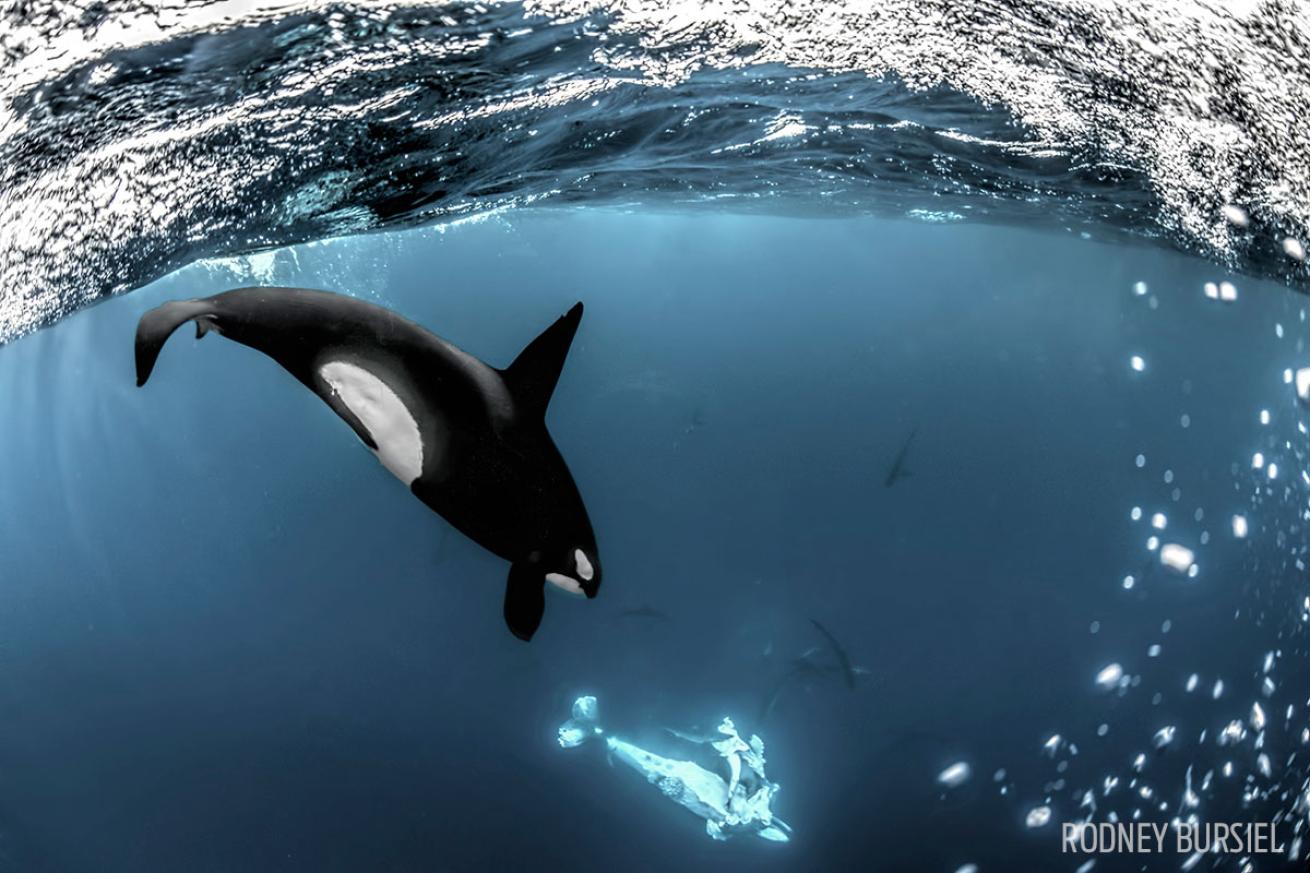
Rodney BursielAn orca zeroes in on its kill, a humpback calf.
THE CIRCLE OF LIFE
That night we headed out to San Benedicto Island in search of giant mantas and hammerheads. We arrived at the next dive site early, but the water was murky and, while hammerheads were there, we couldn’t see much. That afternoon we headed a short distance to El Boiler, known for its manta population, and they didn’t disappoint. I don’t think we were down more than a minute before mantas showed up for the cleaning stations; they love to interact with divers and especially seemed to enjoy playing in our bubbles.
Ending the trip with mantas was a welcome distraction from our experience with the orcas, but it was always on our minds. It truly was life-changing. I see nature in a whole new way now. What the orcas did seems cruel to us, but it is the natural way, the circle of life. What humans do to the animals of the sea, and the sea itself, is reckless and unnatural. We kill millions of sharks every year just for their fins, and giant mantas for their gills, inhumanely hunt whales for meat for which there is little demand and no need, and exploit dolphins and orcas for cheap entertainment. I can handle, and even appreciate, the image of the orcas feeding on that calf — I cannot tolerate more images of sharks with giant hooks in their mouths or whales drowning in fishermen’s nets.
NEED TO KNOW
WHEN TO GO: Solmar V runs year-round trips to the Socorros and Guadalupe Island. Trips to the Socorros run November through June. There really isn’t a bad time of year to go. Giant mantas, bottlenose dolphins and several species of sharks are always present. Whale sharks can be seen November through December and April through June, and humpbacks tend to show up around February. Trips to Guadalupe Island to see great white sharks run August through November. July is reserved for yearly maintenance.
DIVE CONDITIONS: Mid-January through the beginning of April, water temps vary from 70 to 74 degrees F. I get cold easily, so I took my 7 mm wetsuit and was glad I did. November and December temps can be 75 to 80 degrees F. Humpbacks like cooler water, so if you are hoping for an encounter, go in February. Also, be sure to have a good set of fins for strong currents. They aren’t always necessary, but they’re nice to have in case.
TRAVELER TIP: Socorros trips are scheduled during winter and spring — when chances for good weather are highest — but occasionally bad weather can strike then, so be sure to have trip cancellation insurance. If you are prone to seasickness, make sure you have meds. It’s a long crossing and can be rough.
OPERATOR: Solmar V is a 112-foot boat that reaches up to 12 knots and has a crew of 10. It has 12 staterooms that can accommodate 22 guests. Each stateroom sleeps two and has air conditioning with individual controls and a private bathroom.
PRICE: Nine-day trips to the Socorro Islands start at $3,599 per person, double occupancy.
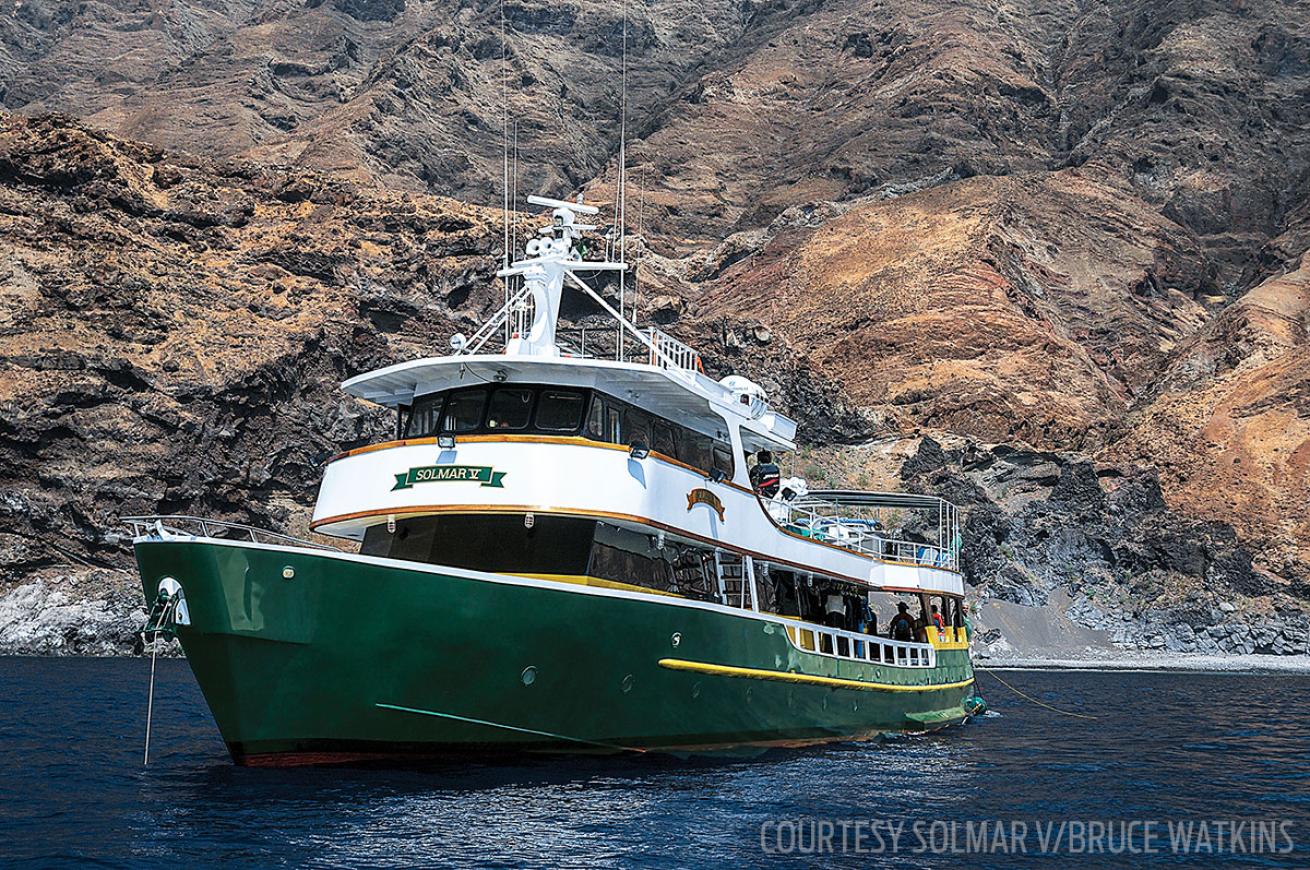
Courtesy Solmar VSolmar V
5 REASONS TO DIVE SOLMAR V
1) BEST CREW These are some of the best crew and divemasters I’ve ever worked with. They’re very professional and knowledgeable about the dive sites.
2) LARGE DIVE DECK Each diver has his or her designated spot for storing gear, with plenty of elbow room.
3) THE FOOD You definitely won’t go hungry. I always looked forward to what chef Tony would prepare next.
4) PHOTOG FRIENDLY Solmar V is especially great if you are a photographer. There’s a large camera table in the middle of the dive deck with plenty of space.
5) SOLMAR V DELIVERS I’ve been on the boat four times now and have never been disappointed.
SOCORRO ISLANDS LIVEABOARDS
The Socorro Islands are hot these days, and reachable only in a limited seasonal window. Can’t get on Solmar V? Consider one of these operators.
Quino El Guardian This 90-foot boat with a 23-foot beam accommodates 16 passengers in one double and four quad-share cabins, which have individual AC. Bathrooms and showers are on the dive deck but are assigned to cabins. Diving is done from inflatables.
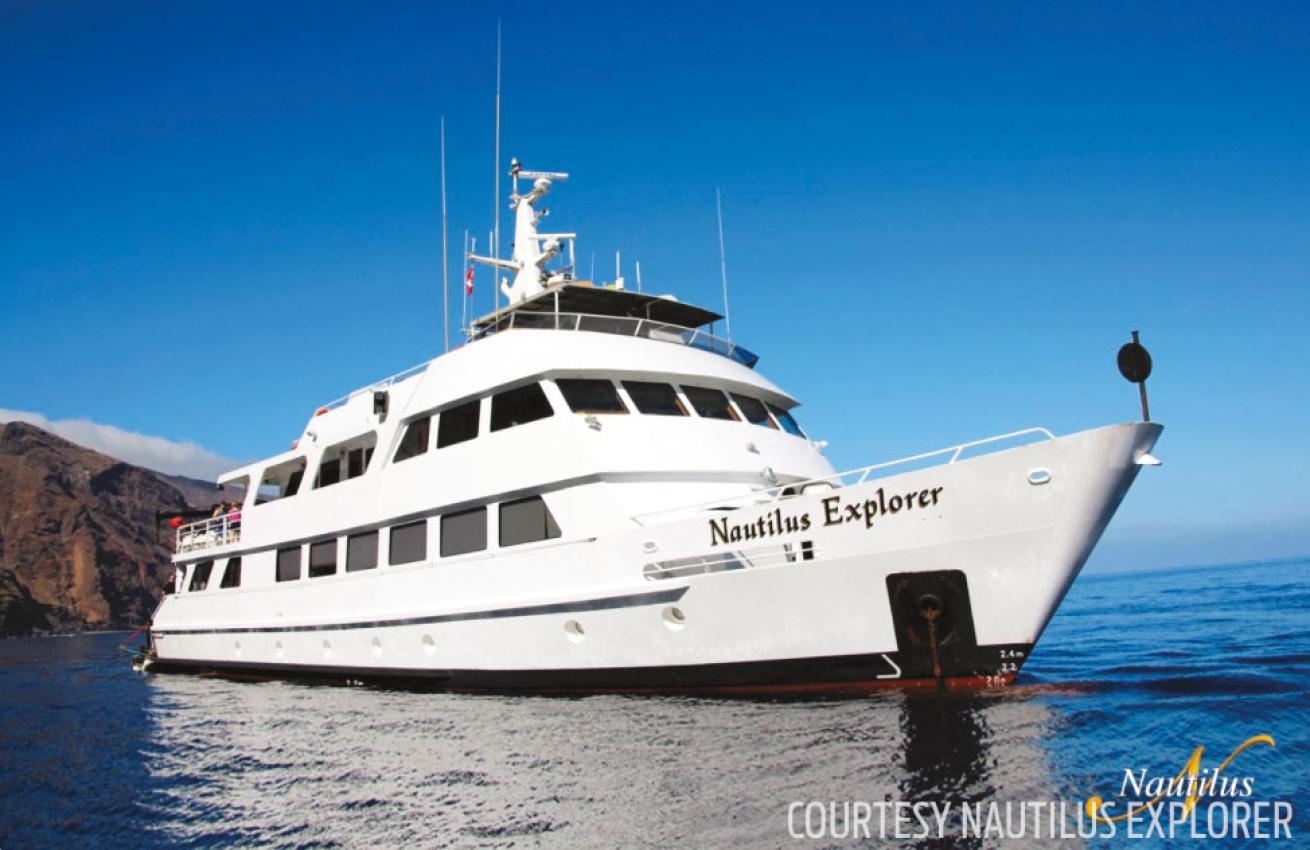
Courtesy Nautilus ExplorerNautilus Explorer
Rocio Del Mar At 100 feet, with a 25-foot beam, Rocio del Mar accommodates 20 divers in 10 air-conditioned cabins with private bathrooms. There is plenty of space to relax, including a salon, a covered sitting area and a covered sun deck. Diving is from two 18-foot Achilles Zodiacs.
Nautilus Explorer This 116-foot steel-hulled boat has a 27-foot beam and carries 25 passengers in four suites and eight staterooms with bathrooms, plus a triple-share. The boat has a large sun deck and a hot tub. Diving is from three high-speed inflatables.


